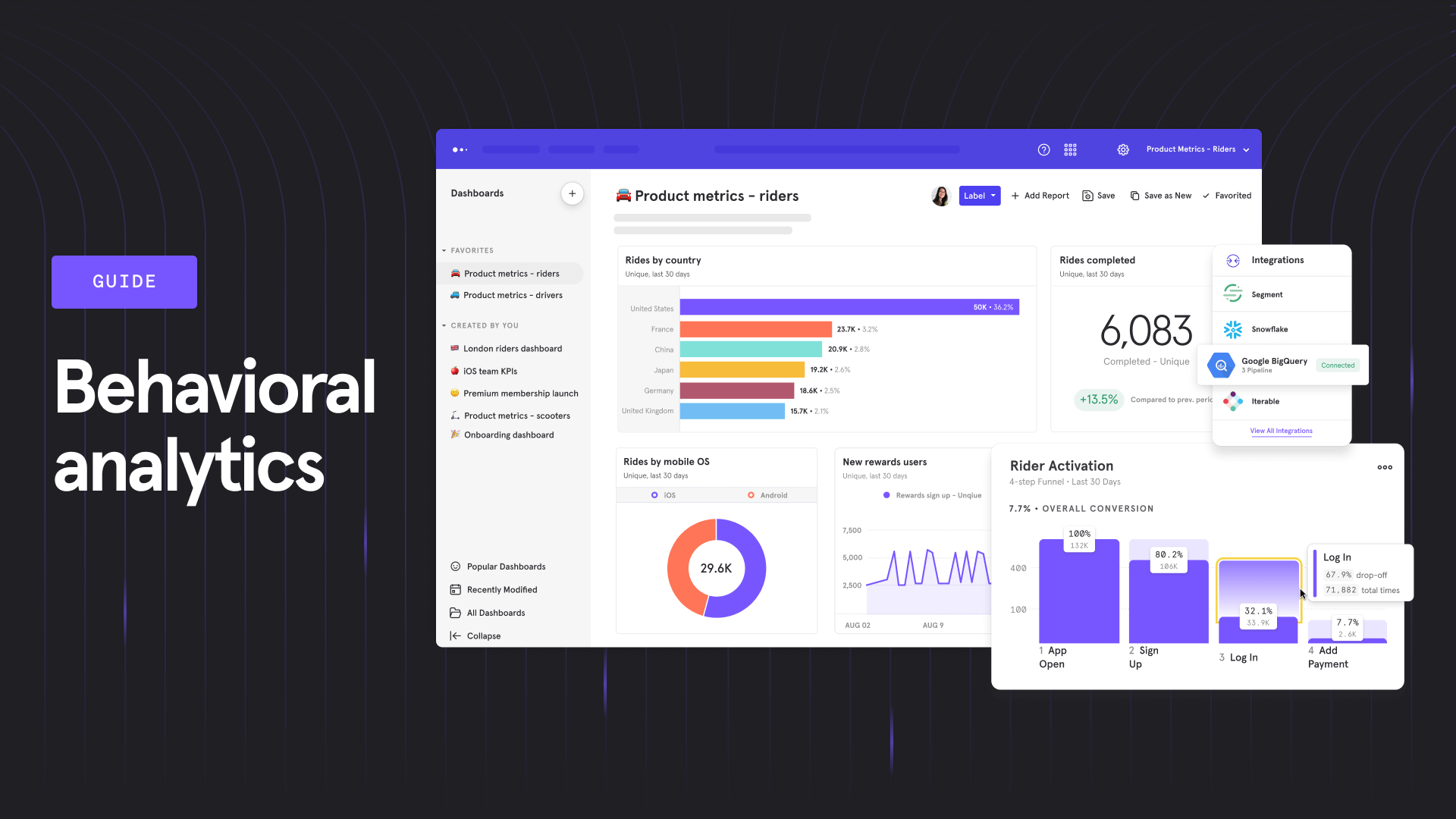
In today’s fast-paced digital landscape, content marketing is no longer a one-size-fits-all approach. With the rise of AI-driven personalization and user-centric strategies, businesses must adapt their content creation processes to align with audience behavior. This is where behavioral analytics comes into play. By leveraging data on how users interact with your content, you can make informed decisions that drive engagement, improve conversion rates, and ensure your content remains relevant.
This article explores how to use behavioral analytics to guide effective content updates, offering actionable steps, tools, and insights to help you stay ahead in the competitive world of SEO and content marketing.
What Is Behavioral Analytics and Why It Matters
Behavioral analytics refers to the process of collecting, analyzing, and interpreting data about how users interact with your website, app, or content. This includes metrics like click-through rates, time spent on page, bounce rates, scroll depth, and conversion paths. Unlike traditional analytics, which focuses on basic metrics like traffic and page views, behavioral analytics delves deeper into user intent, preferences, and engagement patterns.
In the context of content marketing, behavioral analytics allows you to understand what resonates with your audience, identify content gaps, and optimize your strategy accordingly. For example, if users frequently abandon a blog post halfway through, it could signal that the content is not engaging or that the topic lacks relevance.
According to a 2024 report by HubSpot, brands that use behavioral analytics to guide content updates see a 30% increase in engagement compared to those that rely solely on static content strategies. This makes behavioral analytics an essential tool for modern marketers.
How Behavioral Analytics Impacts SEO Performance
Behavioral analytics directly influences several key SEO metrics:
- Dwell Time: The amount of time users spend on a page before returning to the search results.
- Bounce Rate: The percentage of visitors who leave after viewing only one page.
- Click-Through Rate (CTR): How often users click on your content from search engines.
- Conversion Rates: Whether users take the desired action (e.g., sign-ups, purchases).
Search engines like Google use these signals to determine the quality and relevance of your content. Pages with high dwell time and low bounce rates are more likely to rank higher in search results.
Additionally, behavioral data can help you refine your search intent alignment. If users consistently click on a particular type of content (e.g., tutorials, product comparisons), it indicates that your content should be optimized to match that intent.
For instance, if a video on your site has a high watch time but low engagement, it might be worth updating the thumbnail or adding a call-to-action to encourage clicks.
Step-by-Step Implementation Framework
1. Define or Audit the Current Situation
Before making any changes, you need to understand where your content stands. Start by:
- Reviewing existing content: Identify which pieces are performing well and which are underperforming.
- Mapping user journeys: Use tools like Hotjar or Google Analytics to track how users navigate your site.
- Setting KPIs: Determine what success looks like for each piece of content (e.g., increased time on page, higher CTR).
2. Apply Tools, Methods, or Tactics
Once you have a baseline, implement the following techniques:
- Use heatmaps: Tools like Hotjar or Crazy Egg show where users click, scroll, and engage most.
- Track user behavior: Use Google Analytics 4 or Adobe Analytics to monitor user interactions.
- Conduct A/B testing: Test different versions of content to see which performs better.
For example, if your blog posts have high bounce rates, consider using A/B testing to compare different headlines or formatting styles.
3. Measure, Analyze, and Optimize
After implementing changes, continuously monitor and refine your strategy:
- Analyze performance metrics: Look at trends over time and identify patterns.
- Segment your audience: Understand how different user groups interact with your content.
- Update based on insights: Revise content that isn’t performing well and double down on what works.
Tools like SEMrush or Ahrefs can help you track keyword performance and content effectiveness.
Real or Hypothetical Case Study
Let’s look at a hypothetical case study involving a B2B SaaS company that used behavioral analytics to update its content strategy.
Background: The company had a blog with 50 articles but was struggling with low engagement and poor SEO rankings.
Action: They implemented behavioral analytics to track user interactions. They discovered that users were spending more time on articles that included case studies and customer testimonials.
Result: By updating their content to include more case studies and restructuring their content hierarchy, the company saw a 40% increase in organic traffic and a 25% improvement in conversion rates within six months.
This example highlights the power of using behavioral data to guide content updates and improve overall performance.
Tools and Techniques for Behavioral Analytics
Here are some of the best tools to help you implement behavioral analytics effectively:
- Google Analytics 4 (GA4) – Offers advanced tracking of user behavior, including event tracking and user flow analysis.
- Hotjar – Provides heatmaps, session recordings, and surveys to understand user behavior.
- Crazy Egg – Another heatmap tool that visualizes how users interact with your pages.
- Mixpanel – Tracks user actions and helps you understand how users engage with your content.
- Optimizely – Enables A/B testing and personalization based on user behavior.
Each of these tools offers unique insights, so it’s best to combine them for a comprehensive view of user behavior.
Future Trends and AI Implications
As AI continues to evolve, the role of behavioral analytics will become even more critical. Search engines like Google are increasingly relying on AI-driven personalization to deliver more relevant content. This means that understanding user behavior will be essential for optimizing content for both humans and machines.
In the future, we can expect:
- More advanced AI-driven content recommendations based on real-time user behavior.
- Automated content updates triggered by behavioral insights.
- Enhanced voice and multimodal search optimization, requiring a deeper understanding of user intent.
To stay ahead, focus on building a data-driven culture within your team and invest in tools that provide deep behavioral insights.
Key Takeaways
- Behavioral analytics provides valuable insights into how users interact with your content.
- Use it to identify content gaps, optimize for engagement, and improve SEO performance.
- Implement a step-by-step framework that includes auditing, testing, and continuous optimization.
- Leverage tools like Google Analytics 4, Hotjar, and Mixpanel to gather and analyze data.
- Stay ahead of the curve by preparing for AI-driven personalization and multimodal search.
By embracing behavioral analytics, you can transform your content strategy and create a more engaging, effective, and user-centered experience for your audience.
Meta Title: How to Use Behavioral Analytics to Guide Effective Content Updates
Meta Description: Learn how to use behavioral analytics to optimize your content strategy and boost engagement, conversions, and SEO performance.
SEO Tags (5): behavioral analytics, content updates, SEO strategy, user engagement, data-driven content
Internal Link Suggestions:
– [Parameter #1]: Understanding User Intent in SEO
– [Parameter #3]: Optimizing Content for Search Engines
– [Parameter #5]: Measuring Content Performance
External Source Suggestions:
– https://www.hubspot.com/
– https://analytics.google.com/
– https://www.hotjar.com/











